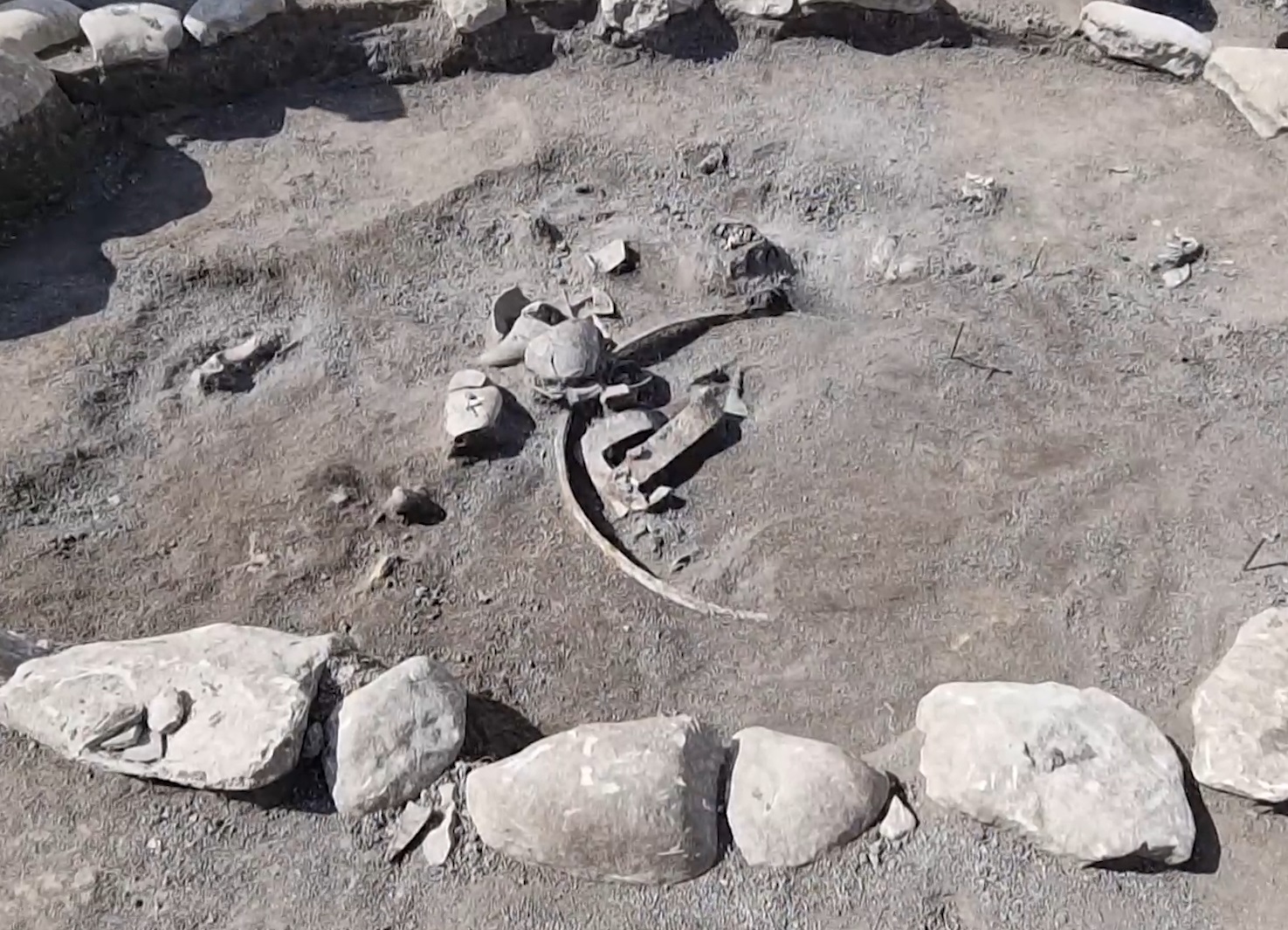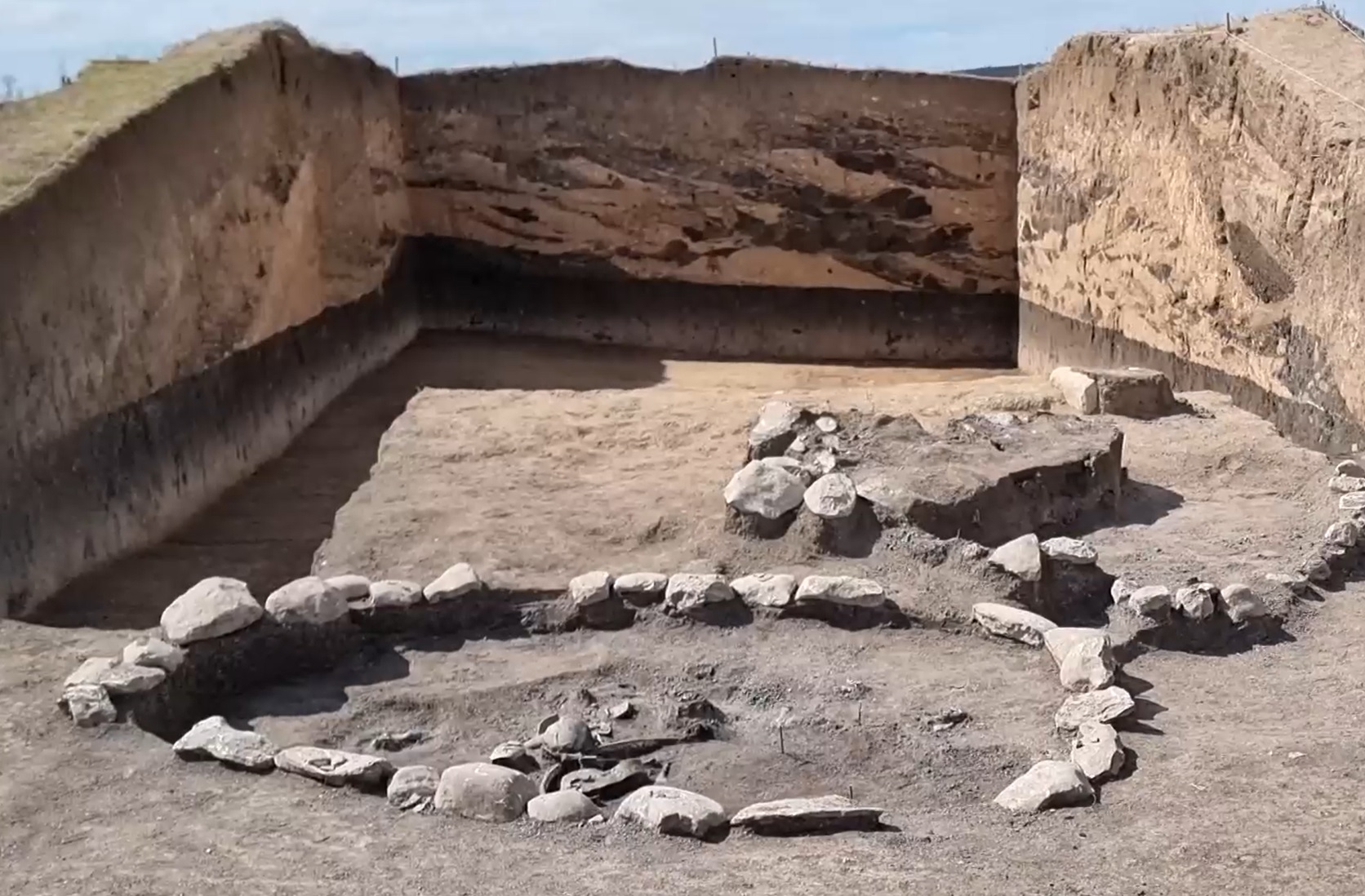A team of archaeologists from the Regional History Museum in Varna have discovered the remains of a Roman chariot during excavations of a necropolis mound on the route of a planned gas pipeline in Bulgaria’s Varna Province.
Previous studies in the area found evidence of Bronze Age activity, however, the mound dates from the 2nd and early 3rd century AD during the Roman period.
According to the researchers, the mound was built in multiple stages, with the construction of an initial mound covered with marl (an earthy material rich in carbonate minerals, clays, and silt), which was then expanded with the addition of domed stone structures.
Within the mound are cremation pits where the deceased were placed on wooden beds, cremated, and then the pits were backfilled. Based on the concentration of burials, the archaeologists suggest that the necropolis served a large community rather than a family setting, especially given the proximity of a nearby Roman settlement.

Cremations were a typical funerary practice in the Roman period, and the grave goods provide insights into the social status of the deceased. Although no gold was discovered, archaeologists found ceramic and glass vessels, iron and bronze artefacts, as well as several Roman coins.
The most notable find is a two-wheeled Roman chariot known as a biga, which was found buried alongside the remains of a horse. These chariots were typically used for sports, transportation, and ceremonies, and are a common symbol featured on Roman coins.
Although Roman chariots are not unheard of in Bulgaria, this is the first such discovery in the Varna region. Based on the high level of preservation, Dr. Slavchev from the Regional History Museum in Varna suggests that it may be possible to reconstruct the chariot for public display.
Header Image Credit : BTA
Sources : BTA – Bulgarian News Agency





